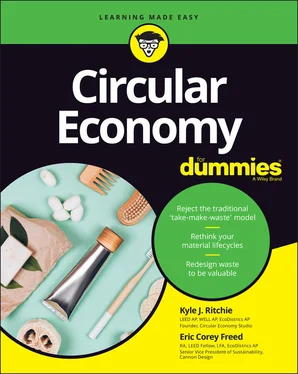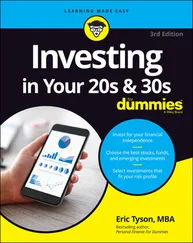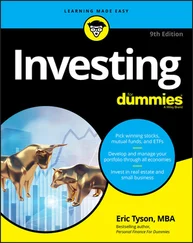Implementing a price on emissions, such as a carbon tax, will further drive companies to transition to a circular approach.
A Larger Drive Toward Deep Sustainability
The circular economy movement is part of a longer narrative around sustainability that began in the early 1960s with Rachel Carson’s book, Silent Spring, a story of the detrimental effects of pesticides on the environment. She is credited with launching the modern environmental movement as we know it today.
This has been brewing for a while
Though the larger, general sustainable movement has been around for more than half a century, dealing with the specific issues of waste and resource depletion has been building up for a while.
Global population is growing so quickly that it has quadrupled in the past century, and the planet is projected to exceed 9 billion people by 2050. This will further strain its limited resources and produce even more waste that it doesn’t have the space to handle. All this population growth will rapidly increase the demand for redesigned and sustainably harvested materials that produce little to no waste.
 Here in the United States, the federal government has been incapable of passing national standards or regulations around sustainability, leaving most of the policymaking up to the individual states and cities. High-population states like California have taken the lead in addressing environmental regulation around climate change, committing to being carbon neutral by 2045.
Here in the United States, the federal government has been incapable of passing national standards or regulations around sustainability, leaving most of the policymaking up to the individual states and cities. High-population states like California have taken the lead in addressing environmental regulation around climate change, committing to being carbon neutral by 2045.
The whole idea of taking a linear approach (take-make-waste) and reducing its environmental impact is nothing new. The entire notion of a circular economy has deep historical roots in sustainability. In fact, the whole idea of cycles, nutrient loops, and waste reduction has been around since the start of the industrial revolution.
The circular economy owes a debt of gratitude to some philosophical pillars of sustainability. Let’s look at some of these schools of thought.
Conceived by California landscape architect and professor, regenerative design is an approach that grew out of an assignment that John T. Lyle gave his landscape architecture graduate design class in 1976. Lyle challenged his students to design a community where daily activities were based on the value of living within the limits of the available renewable resources. Today, the Lyle Center for Regenerative Studies, part of the College of Environmental Design at California State Polytechnic University, Pomona ( https://env.cpp.edu/rs/rs ) offers courses on how to design without degrading the natural environment.
Industrial ecology, popularized in 1989 by the article “Strategies for manufacturing,” which was written by Robert Frosch and Nicholas E. Gallopoulos and appeared in Scientific American , is the study of the material and energy that flow through an industrial system. It brings science to manufacturing by focusing on the connections between the manufacturers and their supply chains. Industrial ecology seeks to create closed loop processes where any waste is recaptured and returned to the system.
The goal of industrial ecology is to design all the manufacturing and production processes so that they mimic and perform as close to living systems as possible. The framework is often referred to as the science of sustainability because of the way it connects various disciplines.
Biomimicry exploded on the environmental scene with the 1997 book Biomimicry: Innovation Inspired by Nature , by biologist Janine Benyus. She advocated for designing the way nature designs and not seeing nature for what we can extract or harvest from it but rather for what we can learn from it. She described nature as the ultimate designer that has already solved most of the problems humans are now grappling with.
 The science of biomimicry stresses that humans can find solutions to all their self-made challenges by simply looking and understanding the solutions provided in nature. For more on this idea, check out
The science of biomimicry stresses that humans can find solutions to all their self-made challenges by simply looking and understanding the solutions provided in nature. For more on this idea, check out https://biomimicry.net .
Natural capitalism was popularized in a 1999 book by Paul Hawken, Amory Lovins, and Hunter Lovins. The book, Natural Capitalism: The Next Industrial Revolution, describes how the next industrial revolution will be one that relies not on natural resources in order to succeed but rather living in harmony with nature. It promoted the idea that the economy is linked to the environment and that the two aren’t adversaries but rather go hand-in-hand. The book encourages readers to recognize the importance and the value that the natural ecosystem provides as a service (such as fresh air, clean water, and healthy food).
 Natural capitalism is presented as an alternative to traditional capitalism by showing how a company's success depends on its relationship to the environment.
Natural capitalism is presented as an alternative to traditional capitalism by showing how a company's success depends on its relationship to the environment.
Someone looking to ensure a sustainable and secure economy for the future could start by following these natural capitalism guidelines:
Increase the productivity and ecologically sound use of the world’s natural resources.
Keep waste out of the system through reuse and remanufacture.
Follow a service-based business model.
For more on the natural capitalism model, see www.natcap.org .
If most products follow a simple linear process where they’re born, they’re used, and then they die (they’re discarded), then that’s what you would call a cradle-to-grave approach to manufacturing. Cradle-to-cradle advocates for a truly closed loop system where a product is born, is used, and then gets reborn as the same or better product. It’s a process of birth and rebirth, or cradle to cradle.
This concept was put forth in Cradle to Cradle: Remaking the Way We Make Things , a 2002 book by William McDonough (an architect) and Michael Braungart (a chemist). McDonough and Braungart radically questioned (with great success) how we view waste— in fact, Chapter 4of the book, “Waste Equals Food,” is one of the core pillars of the circular economy. It shows how nature has no concept of waste because everything in nature eventually becomes food or nutrients for something else.
If you view the earth as a closed system (which it is) and waste as missed allocations of valuable resources that need to be redesigned, then the vision of cradle-to-cradle consists of healthy products that can be infinitely recycled.
To achieve this goal, cradle-to-cradle follows these three core principles:
Eliminate the concept of waste. Collect and recover value for any materials put into the system.
Use renewable energy. The sun provides more than we need.
Celebrate diversity. Both social and technological diversity is the key to innovation, and it supports the biodiversity and health of ecosystems.
 The Cradle to Cradle Products Innovation Institute (
The Cradle to Cradle Products Innovation Institute ( https://www.c2ccertified.org ) has produced a certification for products that meet its rigorous standards.
Читать дальше

 Here in the United States, the federal government has been incapable of passing national standards or regulations around sustainability, leaving most of the policymaking up to the individual states and cities. High-population states like California have taken the lead in addressing environmental regulation around climate change, committing to being carbon neutral by 2045.
Here in the United States, the federal government has been incapable of passing national standards or regulations around sustainability, leaving most of the policymaking up to the individual states and cities. High-population states like California have taken the lead in addressing environmental regulation around climate change, committing to being carbon neutral by 2045. The Cradle to Cradle Products Innovation Institute (
The Cradle to Cradle Products Innovation Institute ( 










